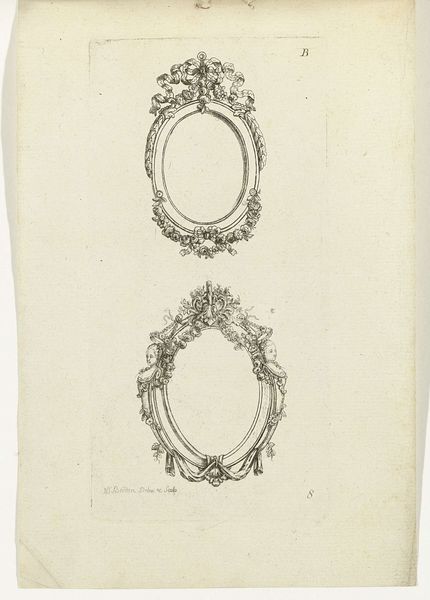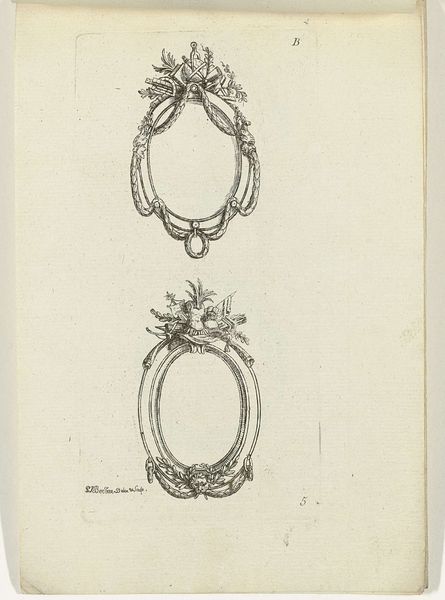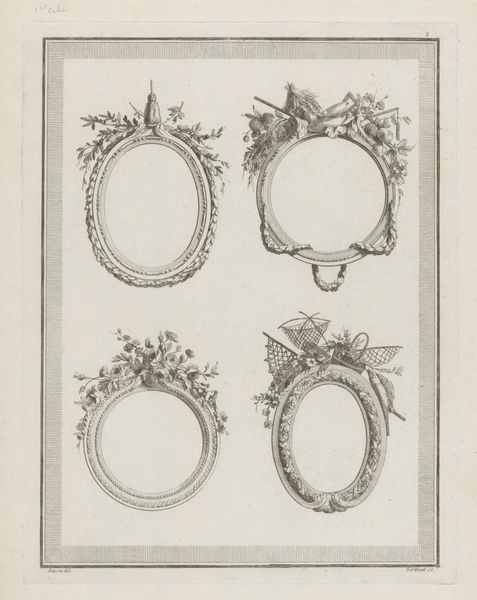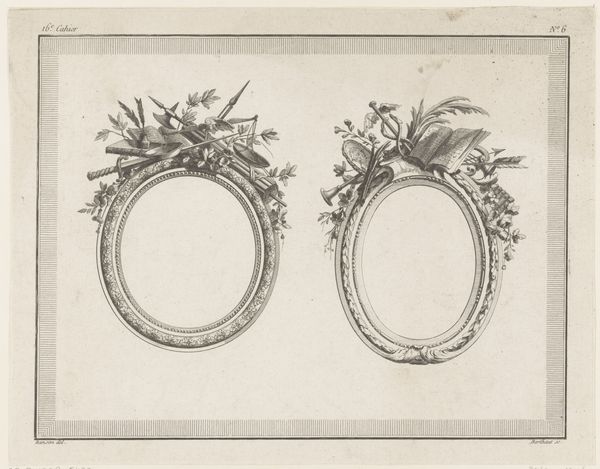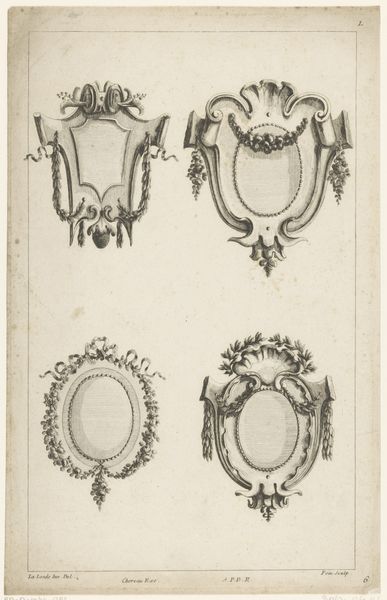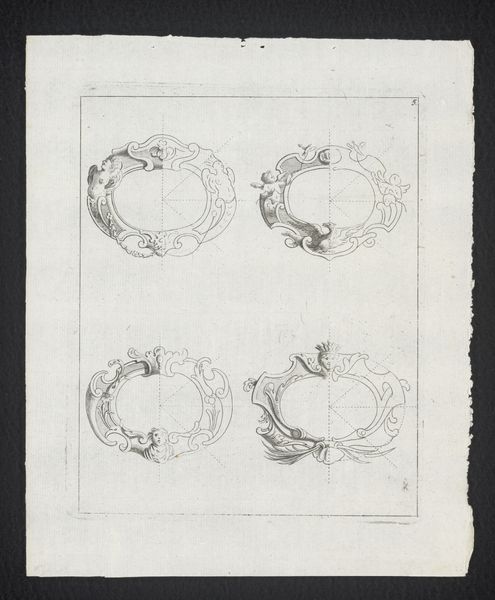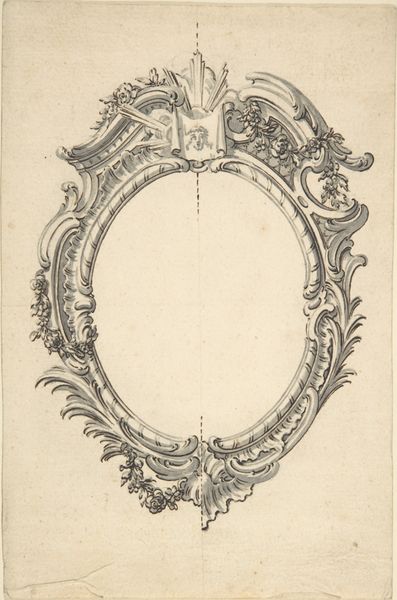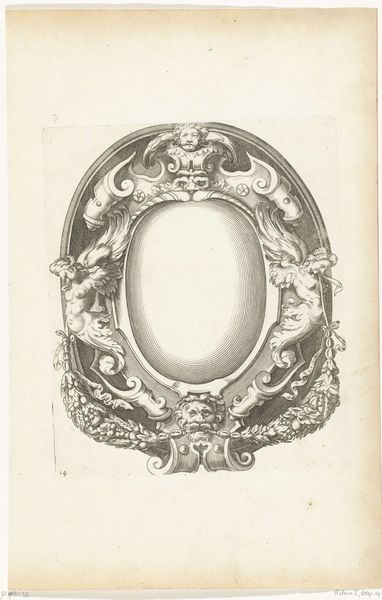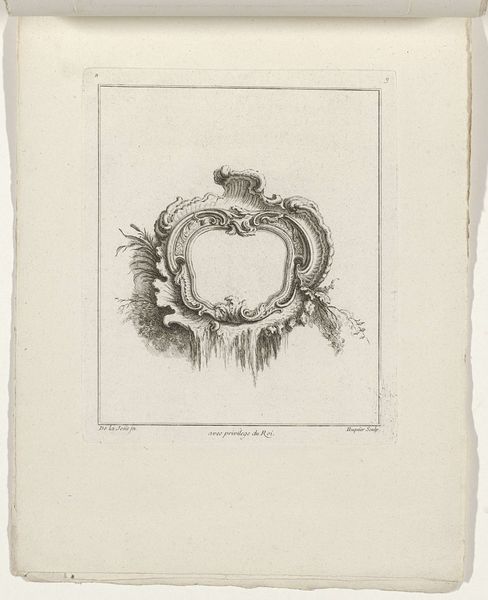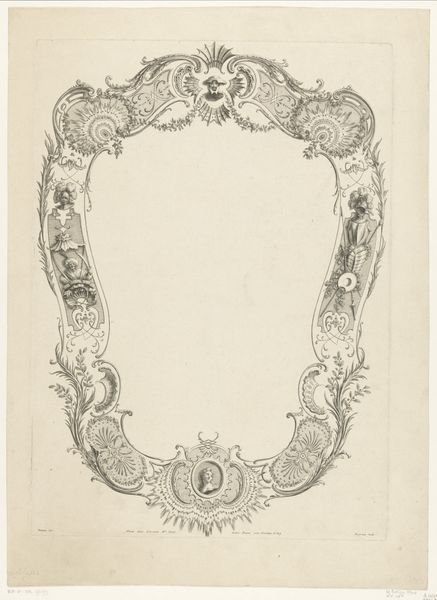
Dimensions: height 166 mm, width 80 mm
Copyright: Rijks Museum: Open Domain
Curator: Look at this remarkable print by P.J. Bertren, dating back to 1768. It's titled "Twee cirkelvormige omlijstingen," or "Two Circular Frames," housed here at the Rijksmuseum. It's rendered in engraving, showcasing the fine lines of the Baroque style. Editor: Immediately, I’m struck by the delicate nature of the line work. They seem to float on the page. Almost like ghostly emblems, designed to capture or celebrate some idea from their time. Curator: Indeed. Bertren, working within a late Baroque aesthetic, participates in a broader visual rhetoric centered around wealth and power in pre-revolutionary Europe. Think about the status of portraits at that time. Who had the means to be portrayed, and the social function of these visual commemorations? Editor: So the form itself – the circular frame – takes on significance. The circle, historically representing wholeness and eternity…here it acts as a restrictive device, a method of limiting who or what is deserving of representation and eternalization through portraiture. Curator: Precisely. The decorative elements also deserve our attention. Note the use of flora, symbolic objects adorning each frame. Consider how gendered the application of ornament often was. Whose likeness are we meant to imagine within these spaces? Editor: Yes. There's also something intriguing in the composition. We see two very similar frames but not exactly alike, each offering variations on similar Baroque motifs. One is topped with what appear to be musical instruments, while the other includes an avain figure, likely a dove. The artist gives us both repetition and difference, encouraging an interesting comparison in terms of pure form. Curator: From a political perspective, the frames can also be viewed as tools of visual propaganda during a time of social and political upheaval. Even the medium matters: engravings were reproducible, making them more widely accessible to elites than unique oil paintings. How are societal ideologies of identity, race, and gender intentionally conveyed in these pieces, and in those this artist crafted at the time? Editor: So the artist wasn’t simply producing decoration; he was creating a signifier of societal value. The question now becomes, what can these circular forms tell us about the people, places, or principles deemed significant at the time? Curator: Precisely the question we should always be asking. Thank you for lending your fresh visual perspective to these period frames. Editor: An excellent opportunity to examine art, ideology, and medium, indeed.
Comments
No comments
Be the first to comment and join the conversation on the ultimate creative platform.
